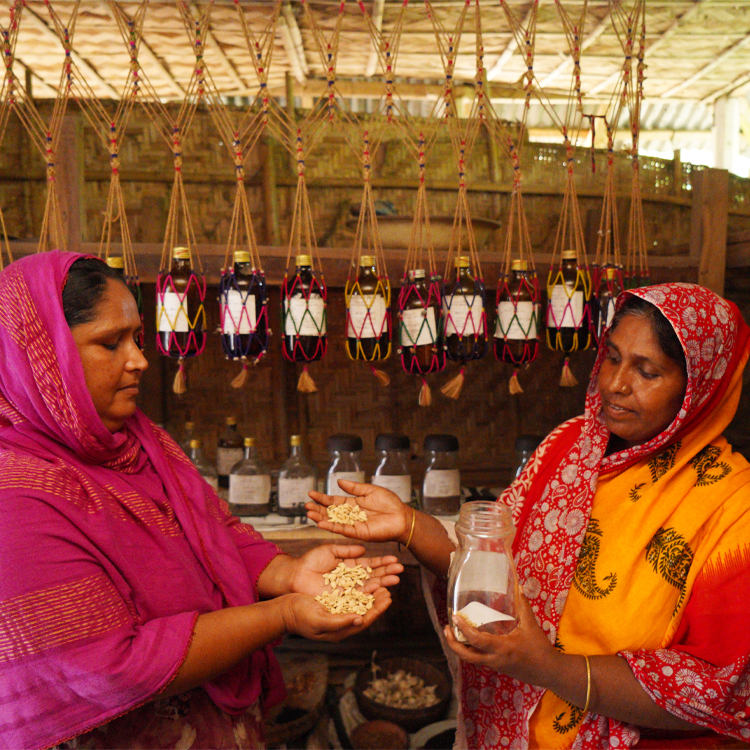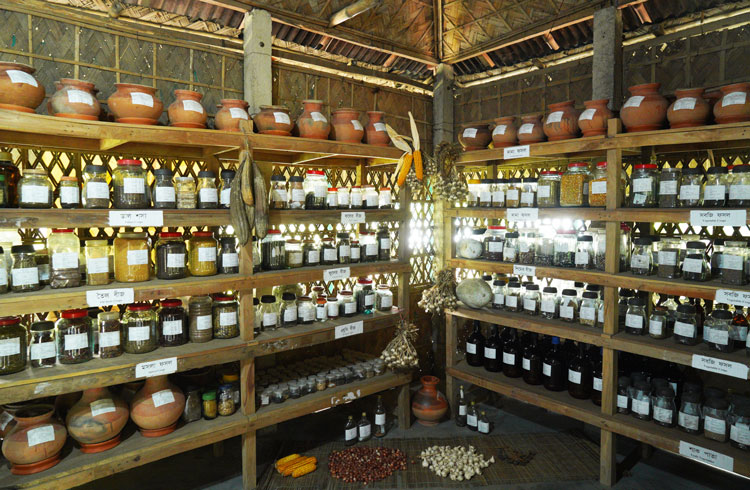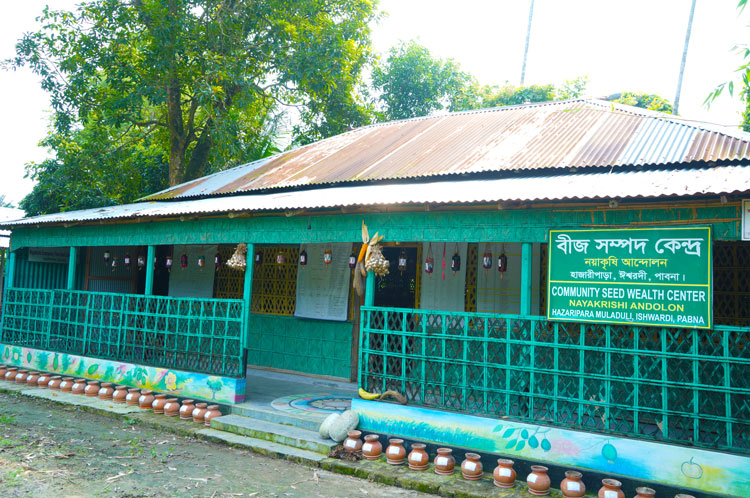Nayakrishi farmers’ Seed Collection and Conservation sdf
 Nayakrishi Andolon || Monday 21 April 2025 ||
Nayakrishi Andolon || Monday 21 April 2025 ||
Method of seed collection and conservation:
The Nayakrishi farmers always collect seed from matured fruits. Seeds are collected from selected plants. Selected plants are threshed separately for seeds. Extreme isolation and care is taken to avoid any undesired mixture. The seed is then cleaned properly. The clean seeds are sun dried for 3-4 days. The seeds are again cleaned after sun drying. The weak and unfilled grains are removed by winnowing. The seeds are then packed in containers/earthen pots/glass pots, depending on size, quantity and variety of seed and then stored. Vegetables seeds are stored in glass containers. Rice seeds are stored in earthen pots. Sometimes rice seed are stored in jute bags. Onion, garlic bulbs are hanged with celling of the house. Seed potato is saved in raised platform. Dried neem leaves are mixed with seed at time of packing in order for keeping the pest away. Germination of the seeds are tested before sowing in the field.
Collection and conservation of seed in Seed Akhra:
Seeds are collected in the Seed Akhra in two systems. The farmers themselves deposit seed in the Seed Akhra. The Seed Expert Committee members also visit the farmers in their houses and collect seed for storing in the Seed Akhra. The farmers save seed for their own use. A portion of the stock is also deposited in the Seed Akhra. This is security storage. In case there is any loss of their stored seed in their house, they can collect from the Seed Akhra. The members of the Seed Expert Committee along with the UBINIG staff members go for collecting seeds which were lost from the community.
The collected seeds are well dried in the Seed Akhra before storage. The seeds are cleaned properly. Then the seeds are stored in the Seed Akhra. Dried neem leaves are mixed with seed before storage. This is done in order for preventing any pest infestation.
The seeds in the Seed Akhra are regenerated through the Nayakrishi farmers. The farmers take season based seeds from the Seed Akhra. The farmers return more quantity of seed than they received from the Seed Akhra, after harvesting their crops. Thus the seeds are regenerated. Relevant information of seeds is documented in respective registers. The data of seed received, the name of the donor, variety, name, and the quantity of seed are entered in the register.
Collection and conservation of seed in the Community Seed Wealth Center:
Different methods are followed for collection of seed in the Seed Akhra. Initially seeds are collected from the Nayakrishi farmers. The Seed Expert Committee members collect seed from farmers near the Seed Akhra. The farmers also bring seed to the Community Seed Wealth Center for storage. Seeds are also collected from other Community Seed Wealth Centers. Seeds are collected in the Community Seed Wealth Center round the year. Seeds are also collected from the Seed Akhra. However, profile of any new seed is made before entering the Community Seed Wealth Center. This documentation job is jointly performed by the members of Seed Expert Committee and the staff members of UBINIG. The seeds are dried properly after collection. The seeds are then cleaned. The seeds are stored after checking the standard.

Relevant information of each sample of seed is written down on the body of the container. This label helps to know the kind of seed, the species, the dates of collection, storage and the quantity of stored seed. This job is also jointly done by the members of Seed Expert Committee and UBINIG staff members.
Relevant information of each sample of seed is documented in a register. The seeds in the Community Seed Wealth Center are regenerated at a regular interval. Some seeds are regenerated by the Nayakrishi farmers. Each and every sample of seed is regenerated in the Community Seed Wealth Center with a view to maintaining the total stock.
The seeds maintained in the farmers own storage, Seed Akhra and the Community Seed Wealth Center are re-dried in Bhadra (mid-August-mid September) cleaned and re-packed properly. This is done to reduce moisture and maintain viability.
